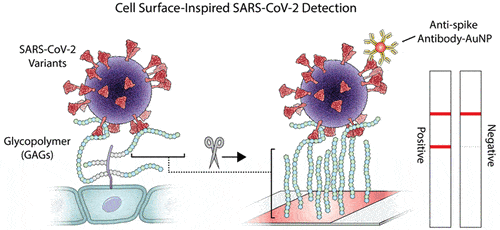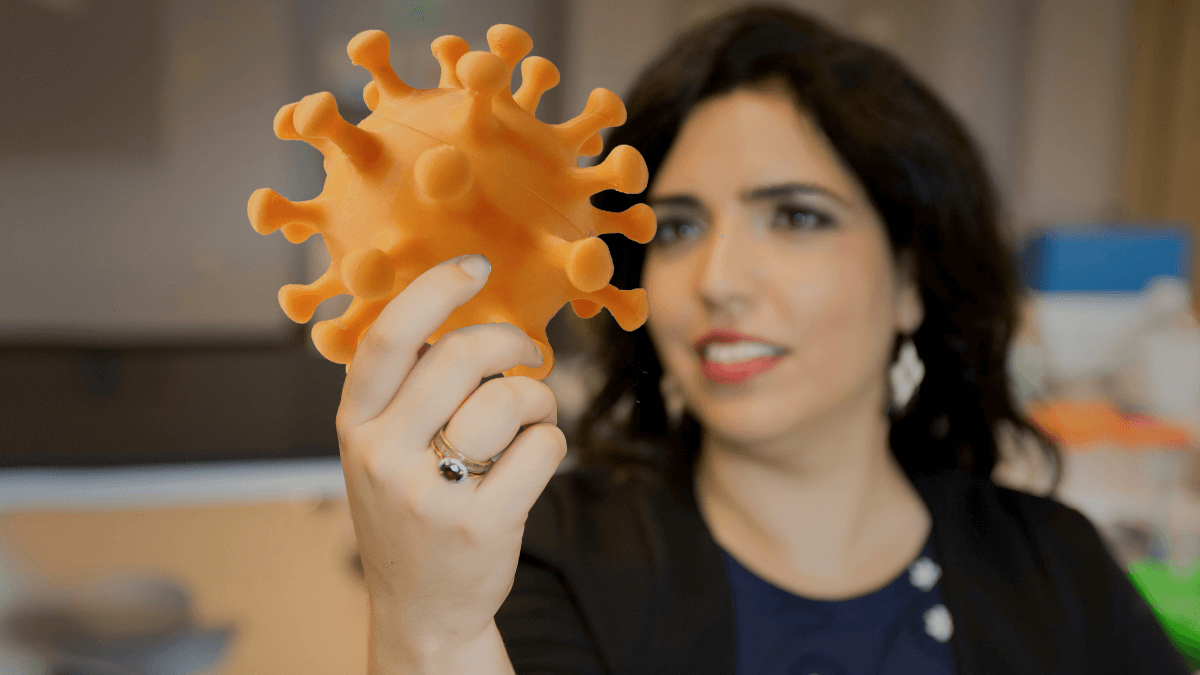Researchers have succeeded in developing a rapid detection test for the corona virus, this in order to meet the challenge of finding new variants and global containment of the epidemic
[Translation by Dr. Moshe Nachmani]

Researchers from the University of North Carolina and the University of California, San Diego, have succeeded in developing a sugar-coated test strip to test for the presence of the coronavirus, specifically all of its known strains, including the delta strain. In the coming weeks, the researchers will be able to determine whether the self-test kit, known by the trade name 'GlycoGrip', can detect infections caused by the Omicron strain. "We turned the virus on its head by using the same sugar molecule that allows it to infect cells - in order to capture it inside our detector," said lead researcher Ronit Freeman, who published the research findings in the scientific journal ACS Central Science. One of the biggest challenges in the ongoing fight against the corona epidemic is the quick response to the identification of mutations of the virus and new strains emerging every now and then. As a result, new tests must be developed to detect changes in the genetic code of the virus. Moreover, the innovative test kit offers a solution for universal testing of the presence of the virus. "We are optimistic that our kit will be able to identify new strains in the future as soon as they are formed," says Freeman. The test was inspired by the natural biology of epithelial cells - the same cells used as a target for the corona virus. These cells are coated with a dense layer of sugar molecules called glycocalyx, and it is precisely this type of sugar network that the virus uses to cause infection.
The idea is relatively intuitive: a drop of bio-fluid containing the virus, such as saliva, is placed on one of the ends of the test strip and flows along the surface. When the drop reaches the sugar coated surface, the virus has no choice but to react with the sugar molecules and thus get trapped inside the sugar surface. This capture next emits signals with the help of antibodies treated with gold nanoparticles while emitting a prominent color indicating the presence of the virus in the sample. In order to better understand how these sugar polymers bind to the virus, the researchers developed detailed computer simulations that helped them explain the mechanisms behind this binding of the cell-anchored sugar to the virus's spike protein portion. "Using atomic-level images of the spike protein, we were able to identify possible binding sites for the sugar polymers and cracked how these sugars adapt to changing structures of the spike," said one of the researchers. "This is a fascinating finding - we actually discovered another secret as to how this protein binds to cells, a binding that is designed to cause infection." A patent application has been submitted for this cutting-edge technology, and looking beyond the current epidemic, the team of researchers envisions a future where the test kit will be able to offer a cheap and reliable test for a wide spectrum of virus types and strains.

More of the topic in Hayadan:

One response
The question is how cheap and how quickly these tests can be produced